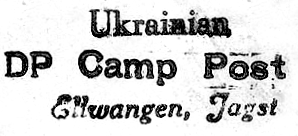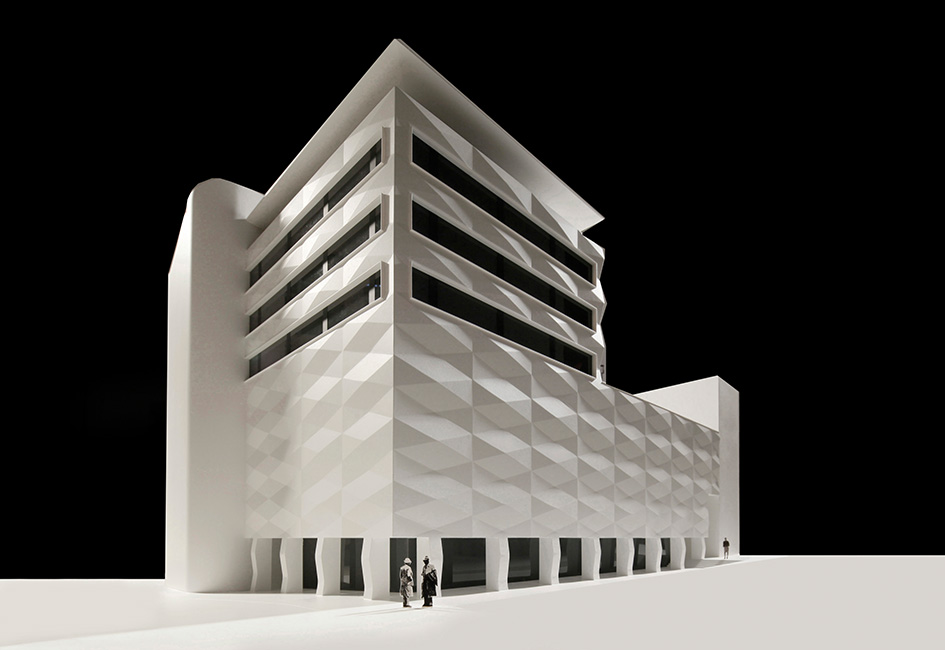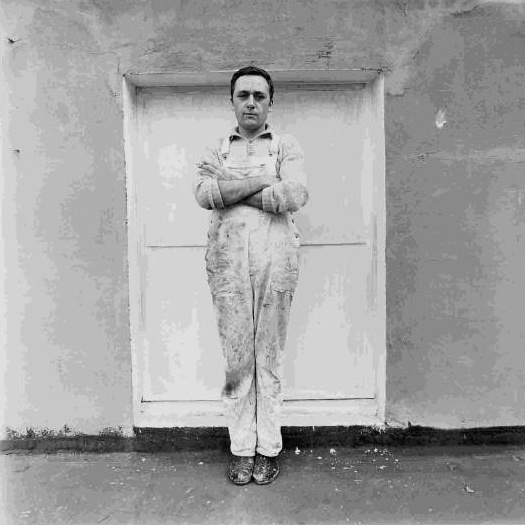|
Bernd Grimm
Bernd Grimm (born 1962) is a German product designer, architectural model builder and artist. He became known through the creation of architectural models of historical and antique buildings. Ten of his models belong to the collection of the architectural icons of the architect Oswald Mathias Ungers. Biography Grimm was born in Ellwangen an der Jagst, Germany. He studied Industrial Design from 1983 to 1989 at the Hochschule für bildende Künste Hamburg with Lambert Rosenbusch and graduated as a designer. During his studies he developed an interest in the field of architectural theory. Together with his fellow student Jan Christophe Kraege, he carried out scientific research on historical buildings such as the Temple of Clitumnus near Spoleto (1985) and produced a model of it. He also investigated the functionality of the proportional compass developed by Balthasar Neumann. During his studies, the German Archaeological Institute commissioned him to create a model of the Tem ... [...More Info...] [...Related Items...] OR: [Wikipedia] [Google] [Baidu] |
Ellwangen
Ellwangen an der Jagst, officially Ellwangen (Jagst), in common use simply Ellwangen () is a town in the district of Ostalbkreis in the east of Baden-Württemberg in Germany. It is situated about north of Aalen. Ellwangen has 25,000 inhabitants. Geography Ellwangen is situated in the valley of the river Jagst, between the foothills of the Swabian Alb and Virngrund (ancient Virgundia) forest, the latter being part of the Swabian-Franconian Forest. The Jagst runs through Ellwangen from south to north. History The town developed in the 7th century as an Alemannic settlement in the Virgunna forest next to the Franconian-Swabian border. In 764 the Frankish noble Hariolf, Bishop of Langres, founded a Benedictine monastery, Ellwangen Abbey, on a hill next to the settlement. The monastery was mentioned in a document of Louis the Pious as ''Elehenuuwang'' in 814. It became a ''Reichsabtei'' in 817. From 870 to 873 the Byzantine Greek "Apostle of the Slavs" Saint Methodius was imprison ... [...More Info...] [...Related Items...] OR: [Wikipedia] [Google] [Baidu] |
Architectural Digest
''Architectural Digest'' is an American monthly magazine founded in 1920. Its principal subjects are interior design and landscaping, rather than pure external architecture. The magazine is published by Condé Nast, which also publishes international editions of ''Architectural Digest'' in Italy, China, France, Germany, India, Spain, Mexico/Latin America and the Middle East ''Architectural Digest'' is aimed at an affluent and style-conscious readership, and is subtitled "The International Design Authority." The magazine releases the annual AD100 list, which recognizes the most influential interior designers and architects around the world. ''Architectural Digest'' also hosts a popular online video series entitled ''Open Door'' that gives an in-depth look at the unique homes of various prominent celebrities and public figures. History Originally a quarterly trade directory called ''The Architectural Digest: A Pictorial Digest of California's Best Architecture'', the magazine was ... [...More Info...] [...Related Items...] OR: [Wikipedia] [Google] [Baidu] |
List Of RAL Colors
The following is a list of RAL Classic colours from the RAL colour standard. The visual samples are approximate and informative only. RAL Classic Yellow and beige Orange Red Violet Blue Green Grey Brown White and black Overview Below is a list of RAL Classic colours from the RAL colour standard. Alongside every colour, the corresponding values are given for: * Hexadecimal, hexadecimal triplet for the sRGB colour space, approximating the given RAL colour * sRGB colour space, sRGB value * Grey value calculated from (0.2126 × red) + (0.7152 × green) + (0.0722 × blue) * CIELAB, CIE L*a*b* values * sRGB value expressed as hue, saturation and lightness (HSL) * device-independent CMYK value: cyan, magenta, yellow, black or key * light reflectance value, LRV, but a consistent light reflectance value is not obtainable from pearlescent or metallic colours The visual samples displayed on the screen are not binding because brightness and contrast may v ... [...More Info...] [...Related Items...] OR: [Wikipedia] [Google] [Baidu] |
Parthenon
The Parthenon (; grc, Παρθενών, , ; ell, Παρθενώνας, , ) is a former temple on the Athenian Acropolis, Greece, that was dedicated to the goddess Athena during the fifth century BC. Its decorative sculptures are considered some of the high points of Greek art, an enduring symbol of Ancient Greece, democracy and Western civilization. The Parthenon was built in thanksgiving for the Hellenic victory over Persian invaders during the Greco-Persian Wars. Like most Greek temples, the Parthenon also served as the city treasury. Construction started in 447 BC when the Delian League was at the peak of its power. It was completed in 438; work on the decoration continued until 432. For a time, it served as the treasury of the Delian League, which later became the Athenian Empire. In the final decade of the 6th century AD, the Parthenon was converted into a Christian church dedicated to the Virgin Mary. After the Ottoman conquest in the mid-fifteenth century ... [...More Info...] [...Related Items...] OR: [Wikipedia] [Google] [Baidu] |
Pantheon, Rome
The Pantheon (, ; la, Pantheum,Although the spelling ''Pantheon'' is standard in English, only ''Pantheum'' is found in classical Latin; see, for example, Pliny, '' Natural History'36.38 "Agrippas Pantheum decoravit Diogenes Atheniensis". See also ''Oxford Latin Dictionary'', s.v. "Pantheum"; ''Oxford English Dictionary'', s.v"Pantheon" "post-classical Latin ''pantheon'' a temple consecrated to all the gods (6th cent.; compare classical Latin ''pantheum'')". from Greek ''Pantheion'', " empleof all the gods") is a former Roman temple and, since 609 AD, a Catholic church (Basilica di Santa Maria ad Martyres or Basilica of St. Mary and the Martyrs) in Rome, Italy, on the site of an earlier temple commissioned by Marcus Agrippa during the reign of Augustus (27 BC – 14 AD). It was rebuilt by the emperor Hadrian and probably dedicated 126 AD. Its date of construction is uncertain, because Hadrian chose not to inscribe the new temple but rather to retain the i ... [...More Info...] [...Related Items...] OR: [Wikipedia] [Google] [Baidu] |
Heidelberg University
} Heidelberg University, officially the Ruprecht Karl University of Heidelberg, (german: Ruprecht-Karls-Universität Heidelberg; la, Universitas Ruperto Carola Heidelbergensis) is a public research university in Heidelberg, Baden-Württemberg, Germany. Founded in 1386 on instruction of Pope Urban VI, Heidelberg is Germany's oldest university and one of the world's oldest surviving universities; it was the third university established in the Holy Roman Empire. Heidelberg is one of the most prestigious and highly ranked universities in Europe and the world. Heidelberg has been a coeducational institution since 1899. The university consists of twelve faculties and offers degree programmes at undergraduate, graduate and postdoctoral levels in some 100 disciplines. The language of instruction is usually German, while a considerable number of graduate degrees are offered in English as well as some in French. As of 2021, 57 Nobel Prize winners have been affiliated with the city o ... [...More Info...] [...Related Items...] OR: [Wikipedia] [Google] [Baidu] |
Tempietto Del Bramante
The so-called ''Tempietto'' () is a small commemorative tomb (''martyrium'') designed by Donato Bramante, possibly built as early as 1502 in the courtyard of San Pietro in Montorio, in Rome, Italy. Commissioned by Catholic Monarchs of Spain, Ferdinand and Isabella of Spain, the ''Tempietto'' is considered a masterpiece of High Renaissance Architecture of Italy, Italian architecture. After spending his first years in Milan, Bramante moved to Rome, where he was recognized by Pope Julius II, Cardinal Giuliano della Rovere, the soon-to-be Pope Julius II. In Rome, Bramante was able to study the ancient monuments firsthand. The Temple of Vesta, Tivoli, temple of Vesta at Tivoli was one of the precedents behind the ''Tempietto''. Other antique precedents Bramante was able to study in Rome include the circular temple of the banks of the Tiber, Temple of Hercules Victor, believed at the time to be a temple of Vesta. However, circular churches had already been employed by early Christian ... [...More Info...] [...Related Items...] OR: [Wikipedia] [Google] [Baidu] |
Construction Surveying
Construction surveying or building surveying (otherwise known as "staking", "stake-out", "lay-out", "setting-out" or "BS") is to stake out reference points and markers that will guide the construction of new structures such as roads or buildings. These markers are usually staked out according to a suitable coordinate system selected for the project. History of construction surveying * The nearly perfect squareness and north–south orientation of the Great Pyramid of Giza, built c. 2700 BC, affirm the Egyptians' command of surveying. *A recent reassessment of Stonehenge (c.2500 BC) suggests that the monument was set out by prehistoric surveyors using peg and rope geometry. *In the sixth century BC geometric based techniques were used to construct the tunnel of Eupalinos on the island of Samos. *Modern technology advanced surveying's accuracy and efficiency. For example, surveyors used to use two posts joined with a chain to measure distance. This technology could only account for ... [...More Info...] [...Related Items...] OR: [Wikipedia] [Google] [Baidu] |
Architectural Model
An architectural model is a type of scale model made to study aspects of an architectural design or to communicate design intent. They can be made from a variety of materials such as paper, plaster, plastic, resin, wood, glass and metal. They can be constructed using traditional handcraft techniques and tools, or newer technologies such as Stereolithography, Fused Deposition Modelling and Selective Laser Sintering. History Architectural models have been in use dating back to pre-history. The older models were found in Malta, such as at Tarxien Temples, and now they are at the archaeology museum in Valletta. Purpose Architectural models are used by architects for a range of purposes: * Ad hoc models, or sketch models, are sometimes made to study the interaction of volumes, different viewpoints, or concepts during the design process. They may also be useful in explaining a complicated or unusual design to builders, or as a focus for discussion between designers and consultant ... [...More Info...] [...Related Items...] OR: [Wikipedia] [Google] [Baidu] |
Villa Massimo
Villa Massimo, short for Deutsche Akademie Rom Villa Massimo ( it, Accademia Tedesca Roma Villa Massimo), is a German cultural institution in Rome, established in 1910 and located in the Villa Massimo. The fellowship of the German Academy in Rome is one of the most important awards granted to distinguished artists for study abroad. The award offers residencies of one year at Villa Massimo in Rome as well as three months at Casa Baldi in Olevano Romano to artists who have excelled in Germany and abroad, including architects, composers, writers and artists. The institution's founder was the patron and entrepreneur Eduard Arnhold, who in 1910 acquired the beautiful property of 36,000 m2, previously the suburban villa of the aristocratic Massimo family. Arnhold commissioned the main building, a large villa appropriate for official events, and ten modern studios with adjacent private residential spaces. He later donated the villa and its luxurious furnishings to the Prussian state. T ... [...More Info...] [...Related Items...] OR: [Wikipedia] [Google] [Baidu] |
Gerhard Richter
Gerhard Richter (; born 9 February 1932) is a German visual artist. Richter has produced abstract as well as photorealistic paintings, and also photographs and glass pieces. He is widely regarded as one of the most important contemporary German artists and several of his works have set record prices at auction. Personal life Childhood and education Richter was born in Hospital Dresden-Neustadt in Dresden, Saxony, and grew up in Reichenau (now Bogatynia, Poland), and in Waltersdorf (Zittauer Gebirge), in the Upper Lusatian countryside, where his father worked as a village teacher. Gerhard's mother, Hildegard Schönfelder, gave birth to him at the age of 25. Hildegard's father, Ernst Alfred Schönfelder, at one time was considered a gifted pianist. Ernst moved the family to Dresden after taking up the family enterprise of brewing and eventually went bankrupt. Once in Dresden, Hildegard trained as a bookseller, and in doing so realized a passion for literature and music. Gerhard's ... [...More Info...] [...Related Items...] OR: [Wikipedia] [Google] [Baidu] |







